Josephus, The family connection
"Josephus, the son of Matthias"
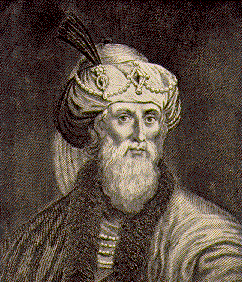
Yesh˙a says: Recognize what is in front of thy face, and what is hidden from thee shall be revealed to thee. For there is nothing concealed which shall not be manifest, {and nothing buried that shall not be raised*}. (=Mt 10:26; *re 'Gnosticism║'; in his scriptural Traditions the Apostle Matthias [Ac 1:21-26] relates Christ's logion: 'Wonder at what is in front of you'Ś quoted by Clement of Alexandria, Stromata II.9).. and see Sayings of Thomas. These are the secret sayings of Jesus which Didymos Judas Thomas║ inscribed..
While we were researching the family name of Jesus we found this; Cleophas, brother of Joseph, has four sons; James, Simeon, Jude, and Jose (Josephus?). The order of this listing may describe the order of their birth making (Jose) Josephus the youngest son.
The 'brothers' of Jesus are explained on
Death of the Disciples
We put two and two together and therorized that Cleophas married Mary after Joseph died
as he would then be responsible for Mary and Jesus and Thomas.
In War of the Jews: Book 2 - Chapter 20
- 4th paragraph, and here we found another son .. "But John, the son of Matthias", (possibly another
brother of Joseph - who would be also a brother to Elizabeth's husband Zacharias, father of John the Babtist).
John and Jesus are cousins.
In Autobiography of Josephus the translaters tell us that Josephus followed John the Babtist. The first paragraph reveals the family name Matthias. (and see below) It is entirely possible that the family bloodline from King David, was required to marry a member of the Aaron family bloodline. As we discovered Mary and Elizabeth were Aaron bloodline family members, not from David as the KJB relates. We also found that the female carried the kingly bloodline gene required for appointment to the kingly line.
Josephus himself, as an adolescent, experienced the life of an ascetic Essene. He wrote (in his Life 2): "When I was sixteen years old, I had a mind to make a trial of the several sects that was among us. These sects are three: - The first is that of the Pharisees, the second that Sadducees, and the third that of the Essenes, as we have frequently told you; for I thought that by this means I might choose the best, if I were once acquainted with them all; so I contented myself with hard fare, and underwent great difficulties, and went through them all. Nor did I content myself with these trials only; but when I was informed that one, whose name was Banus, (John?) lived in the desert, and used no other clothing that grew upon trees, and had no other food that grew on its own accord, and bathed himself in cold water frequently, in order to preserve his chastity, I imitated him in those things, and continued with him three years."
This passage also proves that one can live with Essenes for some time but not become one: after this experience, Josephus became a priest. And he did not marry until he was forced to it in his thirties (by emperor Vespasian!).
Note: this and some passages in the New Testament (Paul in 1Cor7:1,7-8,26-27,32,34; Mt19:10-11) indicate that many highly religious Jews (like Jesus) or mis-named first Christians were not compelled to marry. Certainly, in Rev 14:1-5, they are many of those (144,000!). see also, in Josephus' Wars, II, VIII, about Essenes:
"They neglect wedlock ... They do not absolutely deny the fitness of marriage, ... but guard against the lascivious behavior of woman". But this was only one of the two Essene sects rules.
Josephus' heiritage
In the war between the Jews and the Romans of 66-70 CE, the Jewish general (Jose) Joseph son of Matthias defended Galilee against the Roman legions. He was a Jewish officer. After he had been defeated, he defected to his enemies, and advised the Roman general Vespasian. ( this is backed up on the 'Death 1' page when Josephus says , some of the Matthias's went 'over' to the Romans.) When the latter became emperor, his adviser started a career as a historian who tried to explain Judaism to the Greeks and Romans. His most important works are the Jewish War, the Jewish Antiquities, an Autobiography and an apology of Judaism Against Apion (or Against the Greeks). Being an influential Roman citizen, he accepted a new name: Flavius Josephus. He must have died about 100 CE, when more than sixty years old. ( He would have been a Roman citizen only because Rome controlled Israel.)
Joseph was born in Jerusalem in 37 CE as the son of Matthias, a man from priestly descent, and a mother who claimed royal blood. Stated differently, he was born as a Sadducee and an aristocrat. The boy must have been a real know-it-all, because he excelled in all his studies and at the age of sixteen, he decided to find out for himself what philosophy was best - that of the Sadducees, that of the Essenes or that of the Pharisees. Although he studied all three systems, he was not content, and for three years, he lived in the desert with a hermit named Bannus. Returning to Jerusalem at the age of nineteen, he choose to become a Pharisee.
At least, this is what he writes in his Autobiography. The problem is that it can not be true. To become an Essene, one had to study three years and we may assume that one did not understand the essentials of the teachings of other Jewish sects within a few weeks either. It was simply impossible to study the three disciplines and live three years in the desert before one's nineteenth year. Worse, the Jewish War and Jewish Antiquities show a profound dislike of the Pharisees. Hence, we may conclude that Josephus only says that he became a Pharisee because he had a special talent to know from where the wind blew, and Phariseism was very popular at the moment he was writing his Autobiography.
In 64, he went to Rome to negotiate the release of several priests held hostage by the emperor Nero. It was an adventurous voyage including shipwreck. When he and the priests returned home, he discovered that his country was on the brink of a revolt against the tactless Roman governor Gessius Florus. In his autobiography (discussed below), Joseph claims that he was a moderate. It did not prevent him from joining the revolutionaries when the rebels, belonging to the nationalist groups called Zealots and Sicarians, had annihilated the Roman garrison at Jerusalem. The Temple authorities sent Joseph to Galilee and ordered him to organize the resistance to the approaching Roman legions, which were commanded by Vespasian. more.. Josephus
At the age of 29, with no leadership or military experience , Josephus took command of the Jewish forces in Galilee. Or he tried to: the local politicians who had spent their lives building a power base there resented the intrusion of the haughty Jerusalemite. Josephus found himself battling his own countrymen more than the Romans.
When Josephus was made commander of Galilee (see the War
Chronology Part 3), he was thrust into a complex and brutal
power struggle with the local politicians, ambitious businessmen,
factional supporters and gangs of guerillas. For a man 30 years
old with no apparent leadership experience his actions in Galilee
are remarkable, fortifying key defensive points while staving
off a series of attempts by his opponents to murder him. These
actions are all the more amazing in that he did not have the
unequivocal support of the leaders of Jerusalem, who recalled
him after a few months and ordered he be taken from Galilee
dead or alive. Yet somehow Josephus was able to make himself
popular with "the people" of Jerusalem and, most powerfully,
the ones he simply calls "the Galileans", who supported him
against the aristocracy and the wealthy middle class of the major cities.
see Chronology of Josephus
There are no surviving Roman records of the First Century that refer to, nor are there any Jewish records that support the accounts in the Christian gospels --- except one. In Rome, in the year 93, Josephus published his lengthy history of the Jews. While discussing the period in which the Jews of Judaea were governed by the Roman procurator Pontius Pilate, Josephus included the following accounts: Excerpts from Josephus
Josephus says about Pythagoras; "But then for those
that first introduced philosophy, and the consideration of things celestial and divine among them,
such as Pherceydes the Syrian, and Pythagoras, and Thales, all
with one consent agree, that they learned what they knew of the
Egyptians and Chaldeans, and wrote but little And these are the
things which are supposed to be the oldest of all among the
Greeks; and they have much ado to believe that the writings ascribed to those men are genuine".
Flavius Josephus Against Apion: Book 1 - Chapter 1
Josephus is indeed important. Here is his reason for
writing the "History of The Jews"; paragraph 1
..."because
they are concerned in the facts, and so cannot excuse themselves from committing them
to writing, for the advantage of posterity; nay, there are not
a few who are induced to draw their historical facts out of
darkness into light, and to produce them for the benefit of the
public, on account of the great importance of the facts
themselves with which they have been concerned. Now of these
several reasons for writing history, I must profess the two
last were my own reasons also; for since I was myself interested
in that war which we Jews had with the Romans, and knew myself
its particular actions, and what conclusion it had, I was forced
to give the history of it, because I saw that others perverted
the truth of those actions in their writings."
Paragraph 3; I found, therefore, that the second of the Ptolemies was a king who was extraordinarily diligent in what concerned learning, and the collection of books; that he was also peculiarly ambitious to procure a translation of our law, and of the constitution of our government therein contained, into the Greek tongue.
Now Eleazar the high priest, one not inferior to any other of that dignity among us, did not envy the forenamed king the participation of that advantage, which otherwise he would for certain have denied him, but that he knew the custom of our nation was, to hinder nothing of what we esteemed ourselves from being communicated to others.
Accordingly, I thought it became me both to
imitate the generosity of our high priest, and to suppose there
might even now be many lovers of learning like the king; for he
did not obtain all our writings at that time;
but those who were
sent to Alexandria as interpreters, gave him only the books of
the law, while there were a vast number of other matters in our
sacred books. They, indeed, contain in them the history
of five thousand years; in which time happened many strange
accidents, many chances of war, and great actions of the
commanders, and mutations of the form of our government.
from Antiquities of the Jews:
Preface
We never miss an opportunity to connect Egypt with the teachings of our 'brothers' because it is in this plain truth that the gospel of Jesus of Nazerath was taught. This paragraph gives solid proof the Jews, especially the Essenes, knew much about the Egyptian teachers of Alexandria and respected their work and probably even attended their school. We are fairly certain Jesus and his brothers attended this school.
Several prophet figures are described by Josephus as appearing in Judea over the years. Some of these are directly associated with the insurrection. Students of the New Testament often associate these figures with expectations of a coming Messiah, and ponder the relation between these figures and Jesus. Strictly speaking, Josephus never describes these prophets as predicting an apocalypse or armageddon. What is at stake is not manifestly the end of the world as we know it, but simply a change in government and a demonstration of the Lord's power on earth.
One of the most remarkable passages in the Jewish Antiquities is the so-called 'Testimonium Flavianum':
"At this time there appeared Jesus, a wise man, if indeed one should call him a man. For he was a doer of startling deeds, a teacher of the people who receive the truth with pleasure. And he gained a following both among many Jews and among many of Greek origin. He was the Messiah. And when Pilate, because of an accusation made by the leading men among us, condemned him to the cross, those who had loved him previously did not cease to do so. For he appeared to them on the third day, living again, just as the divine prophets had spoken of these and countless other wondrous things about him. And up until this very day the tribe of Christians, named after him, has not died out." [Jewish Antiquities, 18.63-64]
It is unlikely that a pious Jew like Flavius Josephus would have written that Jesus 'appeared to them on the third day, living again'; consequently, there has been a lot of scholarly debate about the explanation of this strange remark. Some argued that we had to admit that Flavius Josephus had become a Christian; others maintained that it was made up by some Byzantine monk who copied the Jewish Antiquities. The latter explanation can be ruled out because a more or less identical text had been found in an Arabian translation of a part of the Jewish Antiquities. In 1991, John Meier has suggested that Josephus did in fact mention Jesus, but that the text was glossed by a Christian author. His reconstruction of the text is as follows:
"At this time there appeared Jesus, a wise man. For he was a doer of startling deeds, a teacher of the people who receive the truth with pleasure. And he gained a following both among many Jews and among many of Greek origin. And when Pilate, because of an accusation made by the leading men among us, condemned him to the cross, those who had loved him previously did not cease to do so. And up until this very day the tribe of Christians, named after him, has not died out."
Even in this reconstruction, this text is of monumental importance. Not only is Flavius Josephus the only first century non-Christian writer who makes reference to Jesus' life, teachings and death and is his statement independent of the gospels, but he also suggests that Jesus was innocent. A straightforward report would have told that Pilate executed the man from Nazareth because he was considered to be the king of the Jews. But instead of naming the accusation, the Jewish historian names the accusers. Since he usually delights in writing about the deserved punishment of rebels and pretenders, the fact that he does not inform us of the charge, means that he thought that Jesus was innocent.
From the Testimonium Flavianum
This fragment says: "Even so did my mother, the Holy Spirit,
take me by one of my hairs and carry me away on to the great
mountain Tabor."
(translated by Origen and others)The
first fragment from the Gospel of the Hebrews:
Such traditions point to ideas which ignored or were prior to the Nativity story developed by Matthew. Therefore Q partisans contend that the authors of Q knew nothing about the way Jesus died or about the stories of an empty tomb -- or if they knew, they did not care. Hence there was no atonement doctrine in Q theology. And because belief in Jesus' resurrection is the core belief of Christianity, without the resurrection, there would be no Christianity.
The people who wrote Q must have been adherents of Jesus' teachings in Palestine who were not "Christians" -- unless, as James Robinson and others observe, one stretches the word to include anyone who admires Jesus. Scholars used to refer to members of the Q community as "Jewish Christians," a term that can sometimes lead to confusion. The preferred designation nowadays for the group of which they were a part is the "Jesus movement." It took decades, Q partisans believe, before the movement was subsumed into a "cult of Christ," largely gentile and centered on the cross and the resurrection -- a cult that became known as Christianity.
Not only does 'Q' contain no crucifixion account; with its emphasis on Jesus' sayings, it presents a purer distillation of Jesus' moral and social teachings than does Mark's Gospel. Mark does call Jesus a "teacher" but reports few of his precepts... That's because he didn't know them. We have also pointed out that the Gospel of John contains no account of a 'resurrection'. But we assume that John was killed before the resurrection took place.
This Gospel also makes James the 'Just' or 'James the less' a participant at the Last Supper and the first witness to Christ's so-called resurrection but there is no reference to it anywhere in the gospels.. Since James would have been a key figure in the legendary beginnings of these sects, one can see how tendentious all reports about 'historical events' were in Christian records, and consequently how unreliable we must judge all information in the Christian documents, including those which ended up in the canon.
There is actually a contradiction to them in "The Acts of Thomas" Gospel in the Nag Hammidi Library
If one accepts this logic and follows it through, one is forced to conclude that this non-Christian Jesus -- the Galilee-based wise man who displayed no interest in the end of the world, resurrection, or redemption -- is about as "historical" a Jesus as modern scholars are likely to retrieve. It is no wonder that some people believe that the publication of the reconstructed Q text could undermine Christianity as strictly defined.
The story of John the Baptist is in Q, except for his birth and beheading, and so is the story of Jesus' temptation, and even two miracle stories -- the healing of the Roman centurion's slave and the exorcism of a mute demoniac. Other On-line Resources for the Q hypothesis
The Book and the Once and Coming Messiah ; Like their Jewish predecessors and Jewish contemporaries, early Christians believed that the Hebrew Bible was God's book, and therefore a book that should cast light on current events and moral conundrums. For Christians, of course, the most important issue was the true import of Jesus and the story of his life, death, and resurrection. Since they believed him to be the messiah ("anointed one"), God's savior and the harbinger of a new and perfect age, they sought to find mention of him in the Hebrew Bible itself. This is why so much of the story of Jesus in the gospels quotes the Hebrew Bible.
This move was not without precedent. The Dead Sea community also believed that the prophets had predicted their movement and their leader, the Teacher of Righteousness, as well as the political events of their time. They go so far as to claim that the prophets did not know what they were saying, but God, the true author of the text, used them to speak of the (to them) distant future.
The Hellenistic Philosophy; In a time of universalism and individualism the world expanded, linked by a common language (Greek). Cults of the Olympian gods yielded to worship of the ruler; educated men turned to philosophy, others to the mystery-cults and private religious associations. Cults of Isis, Dionysus, Serapis became important; there was a tendency towards syncretism, fusing deities from several traditions to produce One God.
The Hellenistic period was the first age of Western imperial expansion in Asia and one of the principal formative epochs in the history of ancient Eurasia. The interaction of Greek and non-Greek culture in the vast area from the Mediterranean to the borders of India laid the foundations for the Christian and Islamic civilizations of the Middle Ages.
Epicureanism; Both Epicureanism and Stoicism sought to
give ataraxia , or peace of mind. For Epicurus the aim of life was pleasure;
the highest pleasure was absence of pain; pleasure of the
mind was preferable to that of the body. The soul dies with the body, so
we must not fear death or afterlife; the gods exist but do not concern
themselves with humanity or natural phenomena (all of which
can be explained scientifically); we should avoid public life
and emotional commitments in order to escape the pains likely to
be caused by them. The physical world was explained by the atomic
theory adapted from Democritus. "Of all the philosophies of antiquity,
this is perhaps the most familiar to you: the skeptic principle
of doubting everything became, in the modern era, the fundamental basis
of the scientific method".
see Richard Hooker
..Hellenistic Philosophy
Christians, however, had a different set of questions than the Dead Sea sect, and so they found different texts to cite. Any texts that refer to a time of a future deliverance, or the coming of a future king, were fair game. So the suffering servant of Isaiah 53 becomes the suffering Jesus of the gospels. And Luke's quotation from Isaiah 61 becomes a reference to Jesus's ministry of healing and reconciliation.
Yet in every case, as far as we can tell, the Christian reading comes after the fact. That is, they first believed in Jesus and then tried to find his life in Scripture. They then could shape their telling of stories about his life to fit the scriptures. This process may seem very circular, but given their assumptions -- namely, that Jesus is central to God's plan, that God spoke through prophets who might not understand their own words, and that the Bible was a cryptic puzzle needing solving -- this belief in prophecy and fulfillment is not incomprehensible. So Luke can have Jesus say, "Today this Scripture is fulfilled in your presence!" Jesus saw himself as the deliverer that the prophets had foreseen long before. When his followers drew the same conclusion, they could then retain the ancient Scriptures, transforming them into something new, a Christian Bible which delibertly omits the truth..
These facts leave the Dead Sea Scrolls being the Oldest original
and complete biblically related documents presently known.
More pressure needs to be asserted on Israeli and [ again ] Christian authorities to release
the remainder of these documents to the public. Our information says, the Scholars in charge are all
Catholic and they have been holding some scrolls from publication
for 35 years. Their rule of thumb is: "The primary responsibility of every biblical scholar is to ferret
out from the Old Testament susposed anticipations of accepted Christian doctrine. Viewed any other way,
the Old Testament presumably has scant value and relevance. This is a curious defination of
'dispassoniate scholarship'.
There are five Catholic priests in charge of the scrolls
and no one else is allowed to see them. This means they are hiding something.
Father Skehan, who is in charge of
the scrolls said this; "Utimately, the biblical scholor's work should be guided
and determined by Church doctrine and be subject to the sovern
right of Holy Mother Church to witness definitavely what
is in fact concordant with the teaching she has received from Christ."
The Dead Sea Scrolls Deception
Another words, You are never going
to see what they are hiding because it will destroy the doctrine and them.
Father Skehan flatly states; "All inquiry and investigation, regardless of what
might turn up or reveal MUST be subordinated and accommodated
to the existing corpus of official Catholic teaching. In other
words, it must be edited or adjusted or distorted until it
conforms to the requisite criteria. If it can't be
subordinated or accommodated to existing doctrine MUST of necessity, it must be supressed".
The Dead Sea Scrolls Deception, Michael Baigent and Richard Leigh
Pliny the elder was a non Jewish first century author who was a contemporary with Philo and Josephus. He was a Greek writing scientist/geographer/traveler who gathered his own and other peoples travels into a natural history.
Pliny the elder died in 79 after the eruption of Vesuvius he provides a survey of Palestine and Judea and the Dead Sea (which he called Asphalites because of the asphalt found there). He located the Essenes in the Northwest area of it. He is the first author to identify the Essenes as being located in a specific place as opposed to living all over. He does not refer to them as "Jews."
Pliny was a major source used in the development of the "Essene Hypothesis" which claims that it was the Essenes who occupied Qumran and wrote the Dead Sea scrolls. Pliny reports the Essenes as having no women, stifling every urge, without money, and being "consorts of palms."
Philo also has left us two separate accounts of the "Essenes" -- see computer text for a useful translation of Philo.
There are many conjectures on the origin of the name "Essene." Philo associates the name with "hosios" which means "pious" in Greek. Some others see in the name a variation of the Hebrew word "hasidim" means those faithful to God's covenant, and recently (see the ORION discussion list on the Dead Sea scrolls) Stephen Goranson (Duke) has revived an old theory that the name derives from Hebrew "asah" = "to do" (the law).
-there is also much discussion and many questions about how the manuscripts in the caves relate to the archeological ruins at Qumran and the date of the scrolls. Most of the scrolls that have been tested by carbon-14 methods seem to date to before the turn of the era. The Babata archive found near Masada which (about 50 miles south of Qumran) has scrolls dating from 132-35 ce. The Samaritan papyri found to the northwest of Qumran are earlier than the Dead Sea scrolls.
One of Philo's two accounts of the Essenes was preserved by Eusebius, an early 4th century Christian "historian" and apologist -- the original treatise from which it comes has not survived. Eusebius sees Philo's Therapeutae as the first Christian monastics in Egypt.
Philo seems to call the Hebrews "Chaldeans" before his trip to Rome around 40 ce. After the Rome trip he refers to them as "Hebrews." This theory assumes that he learned about negative connotations of "Chaldean" in Rome.
Philo was a Platonist and really liked number theory, especially the number seven.
In his account the man referred to as the "lawgiver" and the "founder of the constitution of the Jews" is Moses.
..He clearly puts the Essenes into a Jewish context and greatly admires them and their practices.
Philo describes the Therapeutae as similar to the Essenes, but in Egypt, near Alexandria (by the Mareotic lake)*
Religious Studies 525, Varieties of Early Judaism
Class Notes #05, 07 October 1999
By Debra B. Bucher
The Christian doctrine tries to make us believe the Essenes were illiterate of the knowledge of God. The Essenes had the knowledge while the Christians who wrote this language at a later date, really did not. Then as you recall, the man we know as Jesus went through many years of training and education and was then taught the secrets of the 'initiates' when he was 30 years old. He was prepared for the mission, he knew of it's coming, just as the Essenes and the Egyptians knew of his coming.
The link between the scrolls and the Essenes has been ascertained through a comparison of the sectarian writings with descriptions of the Essenes found in the first-century writings of Philo, Josephus and Pliny the Elder. Although discrepancies exist between the accounts, the similarities are striking and have convinced most researchers that the Dead Sea sect and the Essenes are one and the same.
In his description of the sect, the Jewish philosopher
Philo pointedly mentions that the Essenes met in "sacred places
[hierous . . .topous] which they call synagogues [synag˘gai]"
(Prob. 81). He goes on to write:
There, arranged in rows according to their ages, the younger
below the elder, they sit decorously as befits the occasion
with attentive ears. Then one takes the books and
reads aloud and another of especial proficiency comes
forward and expounds what is not understood (Prob. 82-83).
De Vaux identified two areas amid the Qumran ruins as
places of assembly: locus 4, a room with benches
along four walls, and locus 77, the refectory
or dining room that contained the base of a podium on
the west end of the room. Apropos this latter
identification, the Jewish historian Josephus
(Joseph ben Matthias) wrote that the Essenes would assemble
into their refectory "as to some sacred shrine [hagion .
. . temenos]" (Jewish War 2.130).
Recently, excavations by Hanan Eshel and Magen Broshi have
revealed that the Essenes actually dwelt in caves and tents
surrounding the main complex.
This suggests that the communal area, with its numerous ritual
baths, was reserved as the cultic center of the Essenes.
By surrounding this center with their tents, the Essenes appear
to have been imitating the ancient Israelites,
who likewise encircled the Tabernacle with their tents in the
wilderness of Sinai. .from..
"Qumran."Donald D. Binder,
Dead Sea Schrolls on-line
Library of Congress
This page contains Jewish literature from the Second
Temple period, including the Dead Sea Scrolls,
and the writings of Philo and Josephus.
Also included are links to the central Rabbinic writings:
the Mishnah, Tosephta, Babylonian Talmud and Jerusalem Talmud (Hebrew fonts required).
The Pseudepigrapha may be found on the Extra-Canonical Writings page.
Donald Binder
Judaica
The Great Isaiah Scroll
In any event they had some base of operations in Capernaum, which is close to Galilee . For centuries, Capernaum has traditionally been identified as a site located on the northwestern shore of the Sea of Galilee, about three miles west of the upper Jordan River. In 1838, Edward Robinson correctly identified there the remains of a synagogue that was partly excavated by Charles Wilson between 1865 and 1866..
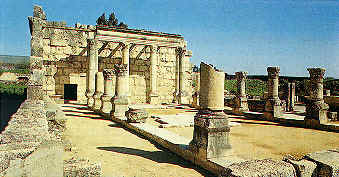 Aside from
various references to Capernaum in the Gospels, the earliest literary
attestation of Capernaum is from Josephus, who refers to the
village in connection with a fertile spring.
The Jewish historian reports he spent a night there with a
fever during the second year of the Jewish War. Capernaum is the city where
Jesus began His earthly ministry, near the cities of
Bethsaida, Magdala, and Chorazin in Israel.
In 1921, the synagogue was partially restored by Gaudenzio Orfali.
In more recent times, Virgilio Corbo and Stanislao Loffreda conducted
nineteen seasons at Capernaum between 1968 and 1986,
excavating not only the synagogue,
but also a nearby church that had long been associated with the
house of St. Peter...from
Capernaum
Aside from
various references to Capernaum in the Gospels, the earliest literary
attestation of Capernaum is from Josephus, who refers to the
village in connection with a fertile spring.
The Jewish historian reports he spent a night there with a
fever during the second year of the Jewish War. Capernaum is the city where
Jesus began His earthly ministry, near the cities of
Bethsaida, Magdala, and Chorazin in Israel.
In 1921, the synagogue was partially restored by Gaudenzio Orfali.
In more recent times, Virgilio Corbo and Stanislao Loffreda conducted
nineteen seasons at Capernaum between 1968 and 1986,
excavating not only the synagogue,
but also a nearby church that had long been associated with the
house of St. Peter...from
Capernaum
What does this have to do with anything. The pictures in the link show Peter's house. Could a poor man afford this kind of House? We also find proof in the scriptures, when the Roman guards 'gamble' for Jesus' cloths. The cloths were not rags as portrayed, therefore worth gambeling for. The point being, the disciples were not poor as pauline doctrine states. And we found evidence that Peter and Simon were married. Catholic Encyclopedia Simon was thus married, and, according to Clement of Alexandria (Stromata, III, vi, ed. Dindorf, II, 276), had children. The same writer relates the tradition that Peter's wife suffered martyrdom (ibid., VII, xi ed. cit., III, 306). We found that Jude, Jesus's brother had children who may have carried on the bloodline. Documents to prove this are on Death of the Disciples
The Secret Gospel of Mark:
During the first quarter of the second century CE, and perhaps earlier, there were two versions of the Gospel of Mark in circulation. The full, "secret" version was reserved for those who "had attained a higher degree of initiation in to the church than the common crowd." (1) The incomplete, "public" version was similar to the full version, with certain verses deleted. It is the public version which we see in modern translations of the Bible. The full, secret, version has been lost.
Only two passages of the missing text are known. They surfaced when a fragment of an ancient letter (2) of Clement of Alexandria (circa 150-213 CE) was found at the Mar Saba monastery near Jerusalem. Morton Smith, the individual who made the find, published the fragment in 1973. Much controversy erupted because of the controversial nature of the text. A near consensus of Clementine scholars has been reached that the letter is authentic. In the letter, Clement revealed that Mark had written a "more spiritual Gospel", adding "whatever would be appropriate for those who are advancing with respect to knowledge ." He states that Mark: "knew that the interpretation would initiate the hearers into the shrine of the truth which is hidden by seven veils."
The letter was from Clement to an unknown person named Theodore. It quotes two passages from the secret version that are missing in the public version: Fragment 1: This was found in "secret Mark" immediately after Mark 10:34. It describes an event very similar to the raising of Lasarus in John 11. Secret Mark relates that a brother of a woman in Bethany had died. She begged Jesus to have mercy on her. At this instant, a voice was heard inside the tomb. Jesus rolled away the stone blocking the tomb's entrance, went in and 'raised up' the brother.
Following this is an unusual passage:
"The young man looked at Jesus, loved him, and began to beg him to be with him....Six days later. Jesus gave him an order; and when evening had come, the young man went to him, dressed only in a linen cloth. He spent the night with him, because Jesus taught him the mystery of God's domain." (Others translate the last two words as "the kingdom of God").
Jesus later returned to the other side of the Jordan.
Fragment 2: Mark 10:46 is typically translated as: (3) "And they came to Jericho; and as he went out of Jericho..."
Scholars have recognized for centuries that there is obviously some text missing from the middle of this verse. Clement's letter includes the words from Secret Mark which were inserted here:
"The sister of the young man whom Jesus loved was there, along with his mother and Salome, but Jesus refused to see them."
Interpretations of the Fragments
The text about the young man's clothing in the first fragment reads literally: "a linen cloth having been draped over the naked body.". The young man in both fragments appear to refer to the same individual. He may have been the young man who fled naked from the scene of Jesus' arrest in Mark 14:51, and/or the same person whom the two Marys and Salome encountered when they visited Jesus' tomb in Mark 16:5. The woman mentioned in the first fragment might have been Salome, Jesus' sister. The second Mary was Mary Magdalene. Some scholars suspect that naked young man covered only in a linen cloth might have been prepared for an initiation ritual. In the early Christian church, (4) both the presbyter and the person to be baptized stood in the water together, naked.
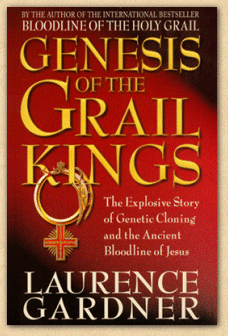 |
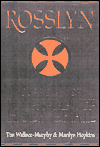 |
 |
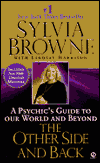 |
 |

|

|
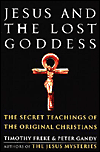
|
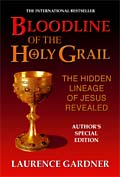
|
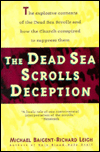
|
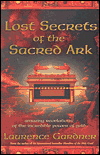
|
Search this site
Our search Engine does not search for the links in this site, only words in the text.
NO PART OF THIS SITE MAY BE COPIED OR REPRODUCED, IN WHOLE OR IN PART WITHOUT THE EXPRESS WRITTEN APPROVAL OF THE WEBMASTER... ę COPYRIGHT 1999 - 2008 C.I.C.ALL RIGHTS RESERVED